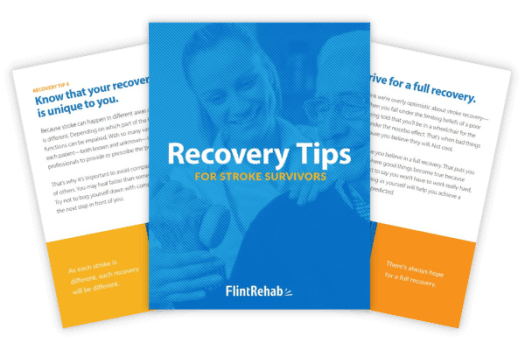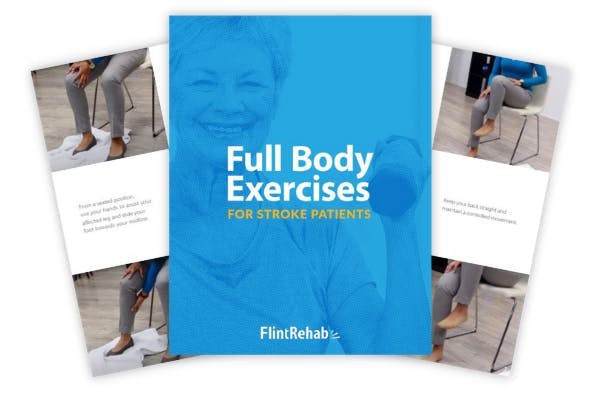No products in the cart.
No products in the cart.
No products in the cart.
No products in the cart.
Home » Neurological Recovery Blog » Stroke » Stroke Rehabilitation Methods » How to Use Mindfulness to Promote Healing and Happiness After Stroke
Last updated on February 19, 2021

Mindfulness during stroke rehabilitation can lead to big gains.
Although it may be overlooked and underrated, mindfulness is a great way to promote both healing and happiness after stroke.
Since more happiness could motivate more action, this is an avenue worthy of attention.
Let’s dig into how mindfulness can benefit recovery after a stroke.
Of course, we can’t start talking about stroke recovery without first discussing neuroplasticity.
Neuroplasticity is the process the brain uses to create and strengthen neural pathways. This process illustrates how the brain can adapt and heal after a stroke.
The process of neuroplasticity is based on learning and experience.
Therefore, to activate neuroplasticity, you must practice the skills you want to relearn. You’re likely already doing this during your therapy sessions, and hopefully at home, too.
Neuroplasticity works best when there is consistent learning and experience to stimulate the brain. The more you practice, the better your skills will get.
Best of all, you can use neuroplasticity in two ways: to heal the brain and boost happiness. How, exactly? Let’s dive into that next.
Stroke recovery can present certain challenges that may also affect your ability to find happiness. This deserves attention because happiness can motivate action – and action is how recovery is made.
However, some individuals struggle with emotions that impede happiness, such as depression or frustration. This is understandable as the secondary effects of a stroke, such as impaired arm or leg function, can make everyday tasks more difficult.
And there is another factor at play too: your self-talk. Fortunately, while the secondary effects of a stroke take time to heal, your self-talk can be addressed immediately.
This concept is critical to a successful recovery because your thoughts influence your actions and improving your self-talk could motivate more meaningful action towards recovery.
For instance, if you told yourself that a plateau in progress means the end of the road, consider how this could prevent you from acting. Then it becomes a self-fulfilling prophecy and prevents recovery.
Fortunately, your thoughts can be improved just like any other skill, and mindfulness is a great tool for the job.
Mindfulness is the process of paying close attention to your thoughts and actions – and it can help promote recovery after a stroke.
To understand how, let’s look at a quick example.
Consider for a moment which of these situations would make you happiest:
Can you guess which one? Believe it or not, science shows that situations #1 and #4 lead to the most happiness.
Indeed, it’s a scientific fact that we’re happiest when thought and action are aligned.
Presence is key, and here’s how it can help stroke recovery:
During stroke recovery, it can be hard to be present, especially if you struggle with coming to terms with your new normal.
If you find yourself reminiscing about the past or yearning for the future, this is understandable but not mindful. As a result, it doesn’t encourage as much happiness as a mindful approach does.
Often, it’s not our intention to have wandering minds. It’s likely something that we’ve been doing our entire lives, and because of neuroplasticity, our brains have become very efficient at wandering.
Luckily, it can work the other way around, too. You can use neuroplasticity to train yourself to be more mindful, and a great tool for this is meditation.
Meditation can benefit stroke recovery in all kinds of ways. To name some, meditation is proven to:
It must be done long-term to produce these results, though. After all, the brain requires experience in order to rewire itself.
Only by exposing ourselves to the stimulus of meditation on a regular basis can we encourage the brain to become more mindful.
A great way to get started is by listening to guided meditations on YouTube or in an app (like Aura, which is on our list of top stroke recovery apps).
If you’ve made it to the end, it’s clear that you enjoy the idea of using mindfulness to boost recovery after stroke.
To dive even deeper, you’ll love our book Healing & Happiness After Stroke – How to Get Back Up After Life Turned Upside-Down.
It’s a science-based approach on how to boost self-esteem, happiness, and recovery. Since you’re interested in mindfulness, we know you’ll love the book.

Get our free stroke recovery ebook by signing up below! It contains 15 tips every stroke survivor and caregiver must know. You’ll also receive our weekly Monday newsletter that contains 5 articles on stroke recovery. We will never sell your email address, and we never spam. That we promise.


Do you have these 25 pages of rehab exercises?
Get a free copy of our ebook Full Body Exercises for Stroke Patients. Click here to get instant access.
“My name is Monica Davis but the person who is using the FitMi is my husband, Jerry. I first came across FitMi on Facebook. I pondered it for nearly a year. In that time, he had PT, OT and Speech therapy, as well as vision therapy.
I got a little more serious about ordering the FitMi when that all ended 7 months after his stroke. I wish I hadn’t waited to order it. He enjoys it and it is quite a workout!
He loves it when he levels up and gets WOO HOOs! It is a wonderful product! His stroke has affected his left side. Quick medical attention, therapy and FitMi have helped him tremendously!”
FitMi is like your own personal therapist encouraging you to accomplish the high repetition of exercise needed to improve.
When you beat your high score or unlock a new exercise, FitMi provides a little “woo hoo!” as auditory feedback. It’s oddly satisfying and helps motivate you to keep up the great work.
In Jerry’s photo below, you can see him with the FitMi pucks below his feet for one of the leg exercises:
Many therapists recommend using FitMi at home between outpatient therapy visits and they are amazed by how much faster patients improve when using it.
It’s no surprise why over 14,000 OTs voted for FitMi as “Best of Show” at the annual AOTA conference; and why the #1 rehabilitation hospital in America, Shirley Ryan Ability Lab, uses FitMi with their patients.
This award-winning home therapy device is the perfect way to continue recovery from home. Read more stories and reviews by clicking the button below:
Grab a free rehab exercise ebook!
Sign up to receive a free PDF ebook with recovery exercises for stroke, traumatic brain injury, or spinal cord injury below: